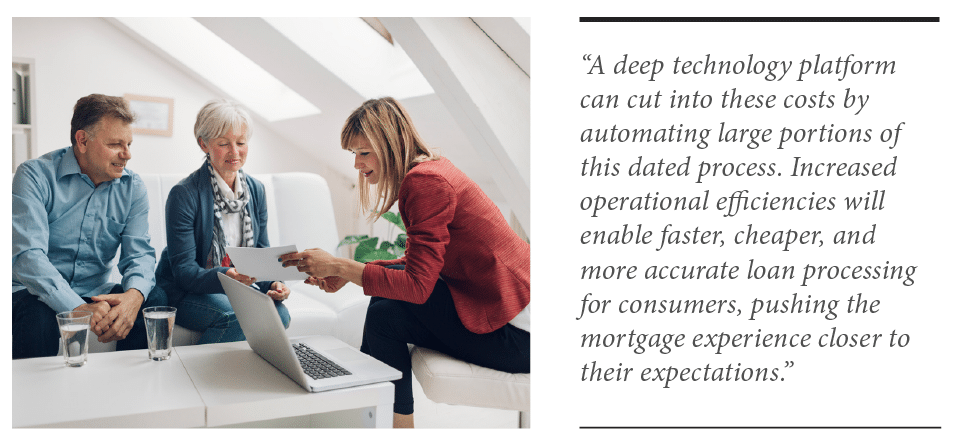By Manvinder Saraon of LendingHome
The mortgage industry has finally begun to move from the Dark Age into the Digital Age. While technological innovations have re-imagined many other consumer financial services over the past few years, mortgages lagged behind. Now, with the recent introduction of the online mortgage (otherwise known as the digital mortgage), the piles of paperwork and endless back-and-forth that characterized the traditional mortgage process are now being replaced by online applications, document uploads, and e-signatures.
But for homebuyers born into the digital age, simply retro-fitting the complex, opaque old-school mortgage application into an online form isn’t enough to meet their expectations of quality service. These digital natives require a highly customized, low-cost online mortgage experience that puts them in control of their own homebuying destiny.
Digital Natives Are Entering the Homebuying Market
15.8 million new homebuyers—many of whom are highly tech-savvy—have already entered or are expected to enter the market between 2015 and 2025, according to research from Big Shifts Ahead: Demographic Clarity for Business, a new book from John Burns Real Estate Consulting. Many of these first-time buyers grew up alongside technology and expect their mortgage experience to meet the same high standards set by their ability to seamlessly book travel online or order a car via their mobile devices.
The first generation of online mortgage lenders allows borrowers to fill out an online application at the start of the process, in the same way the first generation of online travel companies allowed customers to put their travel preferences into an online form before being passed along to a booking agent. But the generation of consumers poised to enter the housing market expect more, starting with an experience designed to meet their specific needs.
A Personalized Mortgage Experience
Digital natives have grown up alongside streaming video services that quickly learn whether they prefer quirky dramas to lighthearted comedies and music apps that use their listening history to create curated playlists. When they provide information about themselves to a company, consumers who have grown up in a digital world expect to receive products and experiences customized for their preferences and personal situation in return. And they expect to be able to see and understand those products online, not via lengthy phone conversations with a sales representative.
Choosing a mortgage is something that most consumers will do only a handful of times in their lives. So while many will do some research on the differences between a 30-year fixed and a 5-year ARM, they turn to their lenders to understand their situation—ideally via data provided online—and help them find and choose the product that best fits their situation. They want to be able to see the impacts of trading points—exchanging paying more up front for paying less monthly, or vice versa—on their estimates and then actually trade points with the click of a button. Transparency from the start into monthly payments and estimated fees is essential for gaining the trust of these homebuyers, who tend to be more skeptical than their parents, especially when they’re being sold to.

Control For the Customer
For today’s homebuyers, the desire for control over their mortgage starts with finding a product customized for their situation and then extends through the application and approval process. The loan application itself should be designed to be intuitive and interactive, allowing borrowers to navigate through it primarily on their own with the help of built-in tips along the way.
Once borrowers find a mortgage that fits their needs, they want to know exactly where they stand with their financing at every step until closing. Digital natives expect to be able to check the status of their loan at any time and from any device. Feedback should be provided throughout the application process, and qualification decisions must be delivered as soon as possible.
A Cheaper, More Efficient Mortgage Process
Digital natives have seen the cost of many services, especially those that once relied on middlemen—like travel agents—lowered as technology takes on a greater share of the workload.
Currently, the Mortgage Bankers Association estimates that the average cost for a lender to originate a mortgage is a record-high $8,887, largely thanks to the hours of manual processing that must be done to underwrite and fund a loan. A deep technology platform can cut into these costs by automating large portions of this dated process. Increased operational efficiencies will enable faster, cheaper, and more accurate loan processing for consumers, pushing the mortgage experience closer to their expectations.

A Digital Mortgage for the Future
As digital natives begin to pour into the housing market, they will look for a mortgage experience that meets the high standards they’ve set after growing up in a digital age. The lenders that gain their trust and offer them the experience they expect will be set up to become a partner for them as they move towards the milestone of buying a home.





